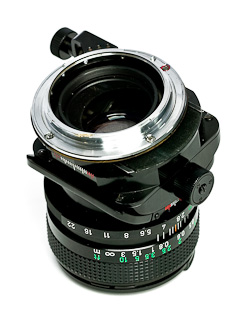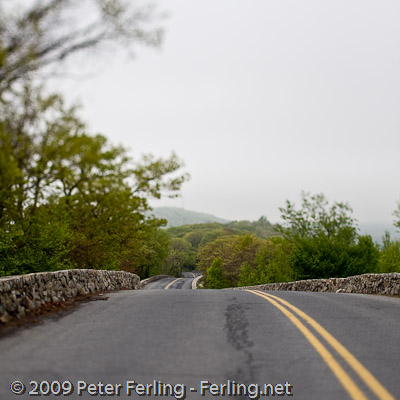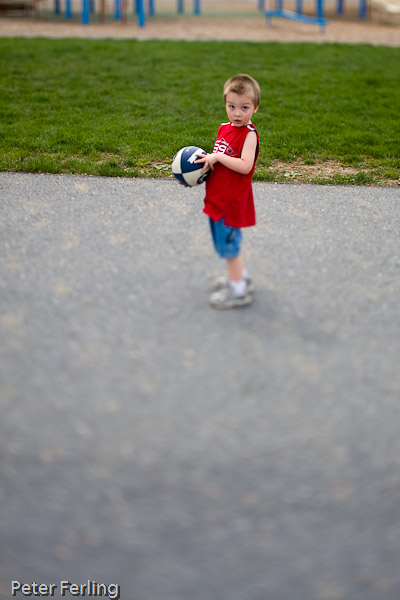
Canon FD 35mm f/2.8 Tilt-Shift "3D in a Can" |
|||
|---|---|---|---|
Specs: Tilt shift at canon museum This is a manual canon FD Lens, and in fact, is not a true FD lens, as that it lacks the mechanical linkage for automatic aperture control via the camera. Therefore, one has to use stop down metering when shooting with it. |
 |
||
This particular lens is very special and rare in that it has been retooled and fitted with an EOS adapter for use on both film and digital EOS cameras. While mine was a custom fit. Kits now exist that will allow for this while maintaining proper flange focal distance to achieve infinity focus. It's worth a look. Properly fitted, this is fantastic lens, and one of a few vintage lenses I use professionally. For technical application, being able to tilt the focus plane to an angle other than straight on provides a great benefit when shooting table top photography or architecture, where straight lines and having a majority of the subject always in focus matters. Shifting the focal plane also allows the use of wider apertures, faster shutter speeds, and lower iso settings. This is especially useful for hand held shots, as the image below illustrates. Here the subject matter of the shot was the road, and I was able to both isolate that, while keeping a wider aperture that allowed the use of a faster shutter speed to counter hand shake.
Using a normal lens, especially on a such dreary fogging day, would have required at least f8, 1/30 sec, and a tripod. Not only that, but everything in the shot would have been in focus, and the road, lacking separation, would not have been as dramatic. It's perfect for product and tabletop photography when unique angles and everyting being in the plane of focus is required.
One of the most highly regarding traits of artistic photography is getting a shot to achieve that 3D look. The image below so illustrates. It is possible to achieve the above effect on normal photographs in photoshop. But I prefer the 1-click method this lens gives me, and it looks more natural, (which is why I consider this lens as "3D in a can"). Creative uses are seemingly endless. While acurate use of this lens suggests putting angled objects into the same focal plane. The opposite is just as useful for both artistic needs and to isolate the center of attention.
Finally, this lens can be used as a normal 35mm lens for indoor and street. It's razor sharp and with an 8 bladed aperture, can achieve some very nice images with decent bokeh or out of focus areas. All of the normal Canon FD 35mm lenses are highly sought after, and still fetch decent prices at auction. Although I wouldn't recommend 35mm for head sized portraits, on a crop sensor DSLR with 1.6x factor, it becomes a 56mm 'normal' lens. Good for full body poses, and can easily become an everyday lens.
The only negative I can draw from this lens, if you could classify it as such is that if you wish to go from a portrait to landscape use. You have to remove four screws that houses the lens assembly, rotate it 90 degrees and put the screws back in. It's a hassle and I'm considering a second such lens so I can have one for portrait and the other for landscape. Update: In the last 5-years that I have owned this lens, it has become one of my top five all time favorites. Occupyng a coveted pocket in my Pelican lens case, where I continue to use it almost weekly. An extraoridinary piece of technology from Canon that has yet to be beaten. If you have a such a copy in your possession, the cost of conversion from FD to EOS mount is well worth it. For me, it has paid for itself many times over. -Keep shooting. |
|||










